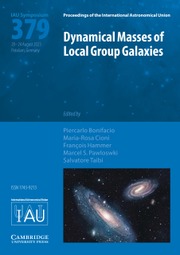No CrossRef data available.
Article contents
Weakening the wind with ULLYSES: Examining the Bi-Stability Jump
Published online by Cambridge University Press: 16 August 2023
Abstract
Radiation-driven mass-loss is an important, but still highly debated, driver for the evolution of massive stars. Current massive star evolution models rely on the theoretical prediction that low luminosity massive stars experience a sudden increase in mass loss below a stellar effective temperature of about 20 000 K. However, novel radiation-driven mass-loss rate predictions show no such bi-stability jump, which effects the post main-sequence evolution of massive stars. The ULLYSES data set provides a unique opportunity to investigate the theoretical bi-stability jump dichotomy and may help to assess the existence of the bi-stability jump in massive star winds. By utilising UV spectra from ULLYSES combined with X-shooter optical data we obtain empirical mass-loss rate constraints, that are no longer degenerate to the effects of wind clumping, and derive novel empirical constraints on the mass-loss behavior across the temperature range of the bi-stability jump. Current preliminary results do not show a clear presence of a bi-stability jump.
- Type
- Poster Paper
- Information
- Proceedings of the International Astronomical Union , Volume 17 , Symposium S370: Winds of Stars and Exoplanets , August 2021 , pp. 94 - 96
- Copyright
- © The Author(s), 2023. Published by Cambridge University Press on behalf of International Astronomical Union



